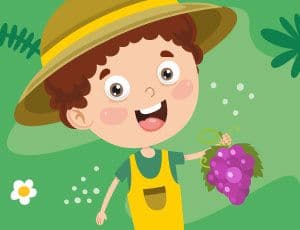Escola Games | Jogos Educativos
https://www.escolagames.com.br
Teacher's support sheet

Fruit Board
What’s your favorite fruit? Come play and train your logical thinking on the game ‘Fruit Board.’ Let’s play and find the correct order of the fruits. Are you ready for it?

Teacher's tips
Level of Education: Elementary School
Subject: Mathematics
Theme: Logical sequence
Age: 06 to 08 years old
Sequencing is a vital concept for the development of children, as it allows them to recognize patterns that make the world more understandable and predictable. These skills begin to develop in children's daily lives, but we can count on extra resources such as games and plays to improve them. [FIM-DICA]
Learner outcomes
To make associations;
To understand patterns;
To develop and stimulate attention, reasoning, and motor coordination
To promote the development of memory performance;
To develop different thinking skills such as: observing, comparing, analyzing, and synthesizing;
To exercise memory and concentration in the process of identification and comparison between images.
Teachers' goals
To provide an environment of free imagination and creativity;
To offer, playfully and dynamically, resources that instigate children to perceive similarities and differences;
To help with the development of student's reasoning ability;
To enable integration between different areas of knowledge;
To stimulate the evolution of different strategies for approaching reality through comparison.
Suggestions of approaches for the teacher
(Approach 1) The teacher can plan a project to work with a logical sequence using examples of children's daily lives through photos or drawings. It could also involve other school content.
There are some tips below.
• Food sequence in drawings (breakfast, lunch, afternoon snack, dinner)
• Life cycle of living beings in a sequence
• Butterfly metamorphosis
• Seasons
Phases of the moon
• Holidays
(Approach 2) Prepare logical cards with all the alphabet letters and ask students to put them in order. The cards can also have children's names and surnames.
(Approach 3) Scramble a children's story and ask them to retell it in the correct sequence.
(Approach 4) Elaborate logical sequences of colors, letters, numbers, and geometric shapes.
(Approach 5) logical cartões com sequences de the vowels números de 0 a 10.
(Approach 6) Prepare an activity for students to use their five senses to identify sequences of flavors, smells, and textures.
(Approach 7) Plan a cooking class to prepare a simple recipe and show students the importance of following the order of ingredients.
More about the content
Use games to motivate children to use additional steps and plan to achieve their goals.
By creating challenges that require additional steps that the child is motivated to do, you can help increase your child's ability to sequence. Using toys and other objects your child likes in scaffolded (supported) activities can motivate your child to perform additional steps. An example might be placing a desired toy or treat in a transparent container so that your child has to plan or perform additional steps to get it. These challenges can become increasingly complex as your child continues to develop his or her sequencing skills. Download the Sequencing Cards Lesson Plan for a game to use with the Stages Learning Sequencing Cards. Click here for a free sample of our sequencing cards to try out with your child.
The “robot game” is another example of an engaging activity that involves extensive sequencing and communication skills. An adult can be the robot and follow the instructions given by the child very literally. For example, if the child were to order the robot to do a task such as “make a jelly sandwich,” the adult would have to follow the child's command even if the direction is incomplete. If the child forgets to tell the robot to open the top of the jelly jar or put jelly in the middle of the sandwich, the adult could make humorous mistakes, prompting the child to use more specific instructions.
